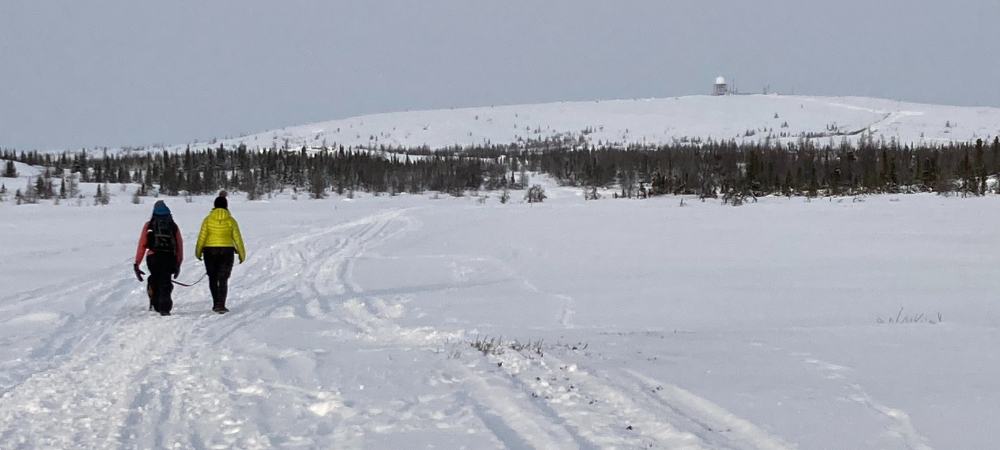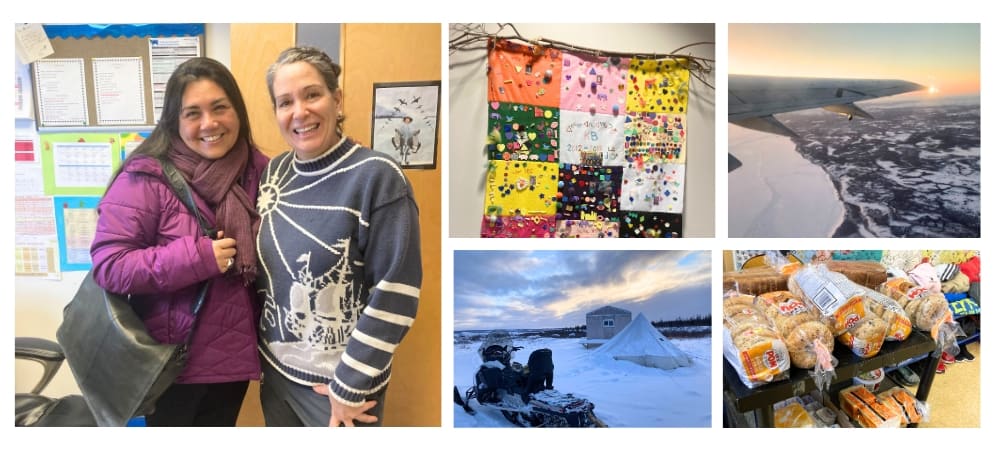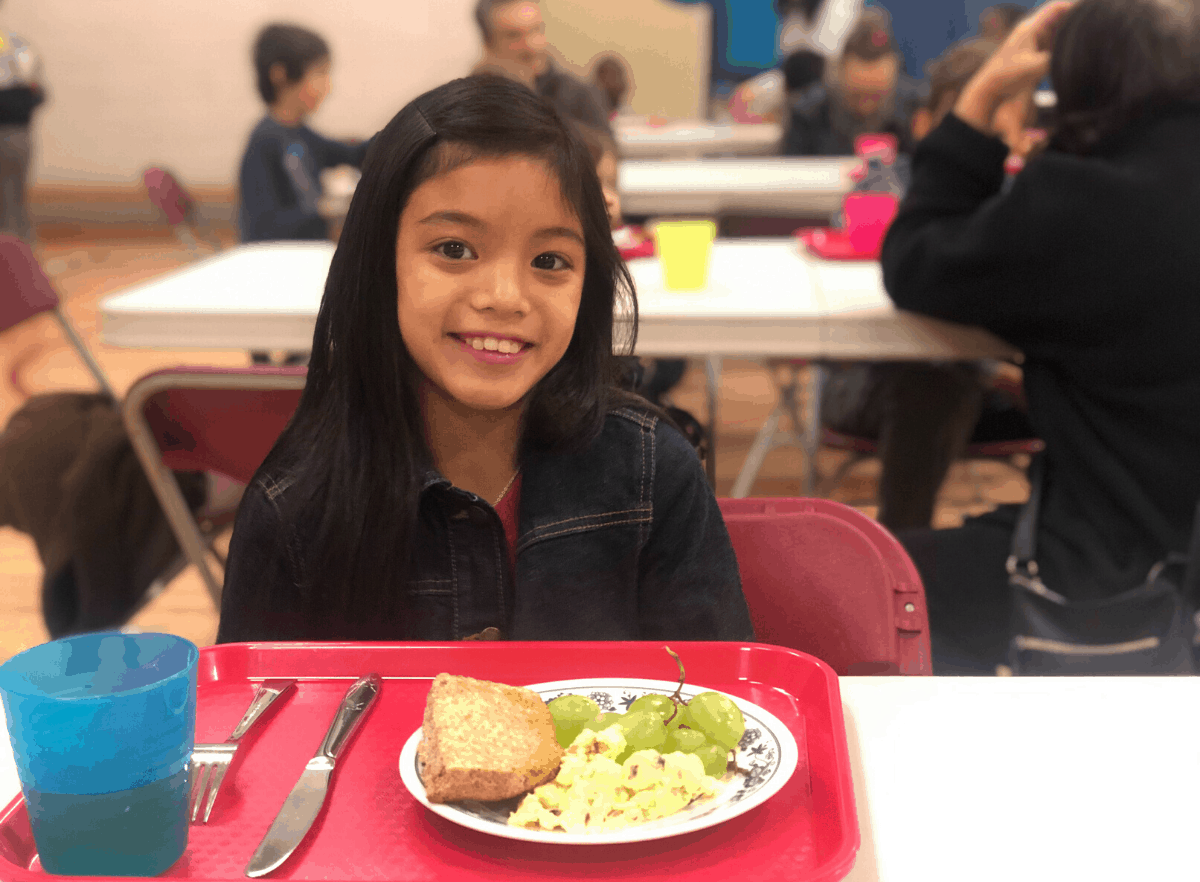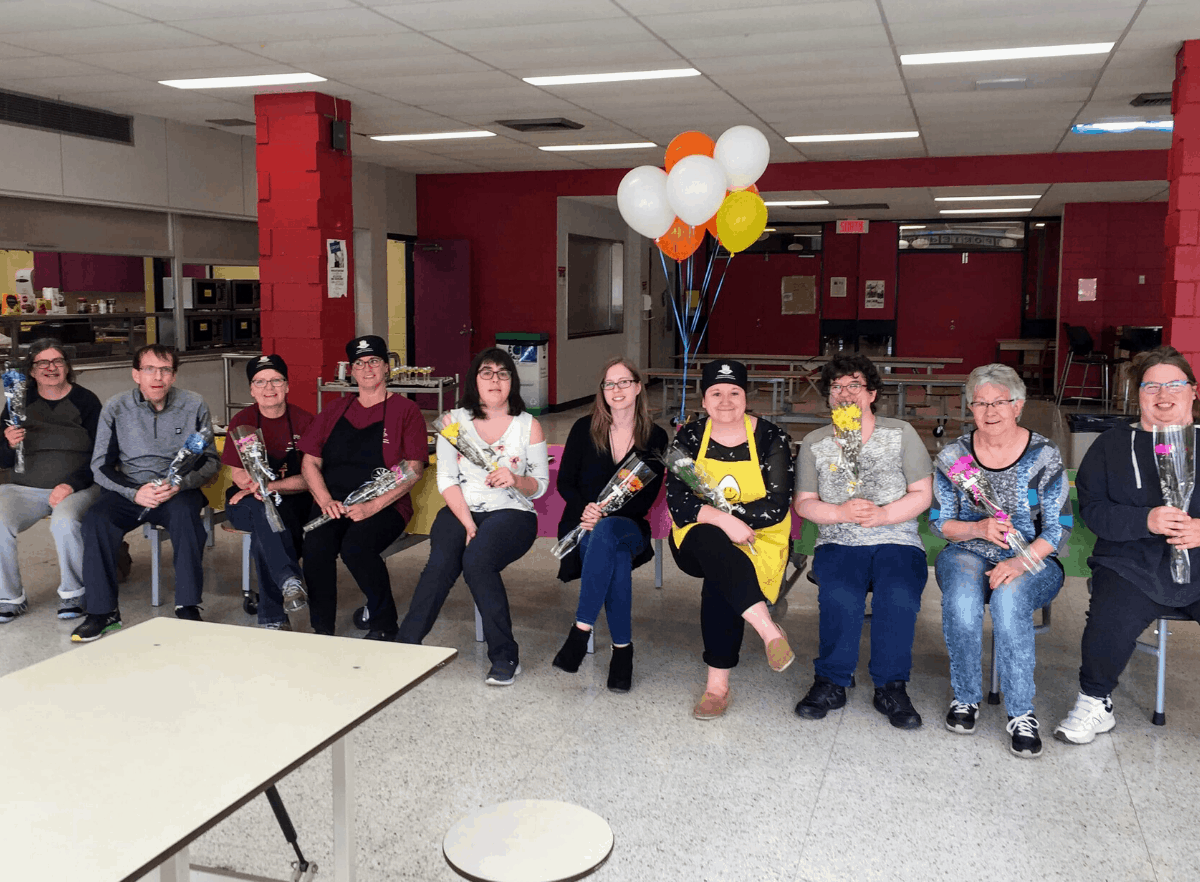
Affirming Cultural Identity, One Bite at a Time

Known for its spectacular northern lights, its vast boreal forest and its majestic rivers, Kuujjuaq is the largest community in Nunavik and a bustling centre of activity for the entire Nord-du-Québec region. It is also home to Pitakallak Primary School, where a school food program has been changing young lives since 2020. While visiting the area in 2022, Tania Angulo, Senior Advisor, Impact and Sustainable Solutions, had an opportunity to sit down with the team behind the program’s success.
Join us in learning more about how cultural practices in the region’s Indigenous communities make their way to every breakfast plate.
Tell us a little about your school’s breakfast program.
Pitakallak Primary School has been serving healthy breakfasts to students since October 2020. That’s 175 children nourished every morning. Ours is a cold breakfast program. Every day, the program coordinator prepares the food, arranges it in the delivery bins and leaves the bins at the front desk for teachers or students to pick up and distribute in class.
How do you adapt the Club’s menus, guidelines and tools to suit the needs of your school?
In many of our local Indigenous (mostly Inuit) communities, eggs, bacon and cereal are the breakfast items of choice. There’s not a lot of fruit served. But in our program, children have access to all three categories of food in the morning: protein food, whole-grain food and fruit or vegetable. Some eat two and save the third for an afternoon snack. Thanks to our partners, we have mini-fridges and toasters in the classrooms. We don’t serve more traditional dishes here at the school, but at different points throughout the year, we put on tasting activities as part of the provincial Healthy Schools program. In the spring, students get the chance to try things like dragon fruit, pink grapefruit and different berries. In the fall, there’s an emphasis on squash. And then there are the green and red apples that are a hit with students all year long.
What about your breakfast program makes you the proudest?
There’s no food waste at our school. Our teachers’ efforts to get students to embrace a zero-waste mindset have paid off.
What kind of dietary habits do local Indigenous communities have?
During harvest season, members of the community gravitate toward crowberries, cranberries, blueberries, kale, watercress, lettuce and shallots. Other times of the year, people eat caribou and beluga meat, ptarmigan and trout.
Thanks to Pitakallak School principal Nancy Cain and program coordinator Nathalie Collin for their input and insights.










